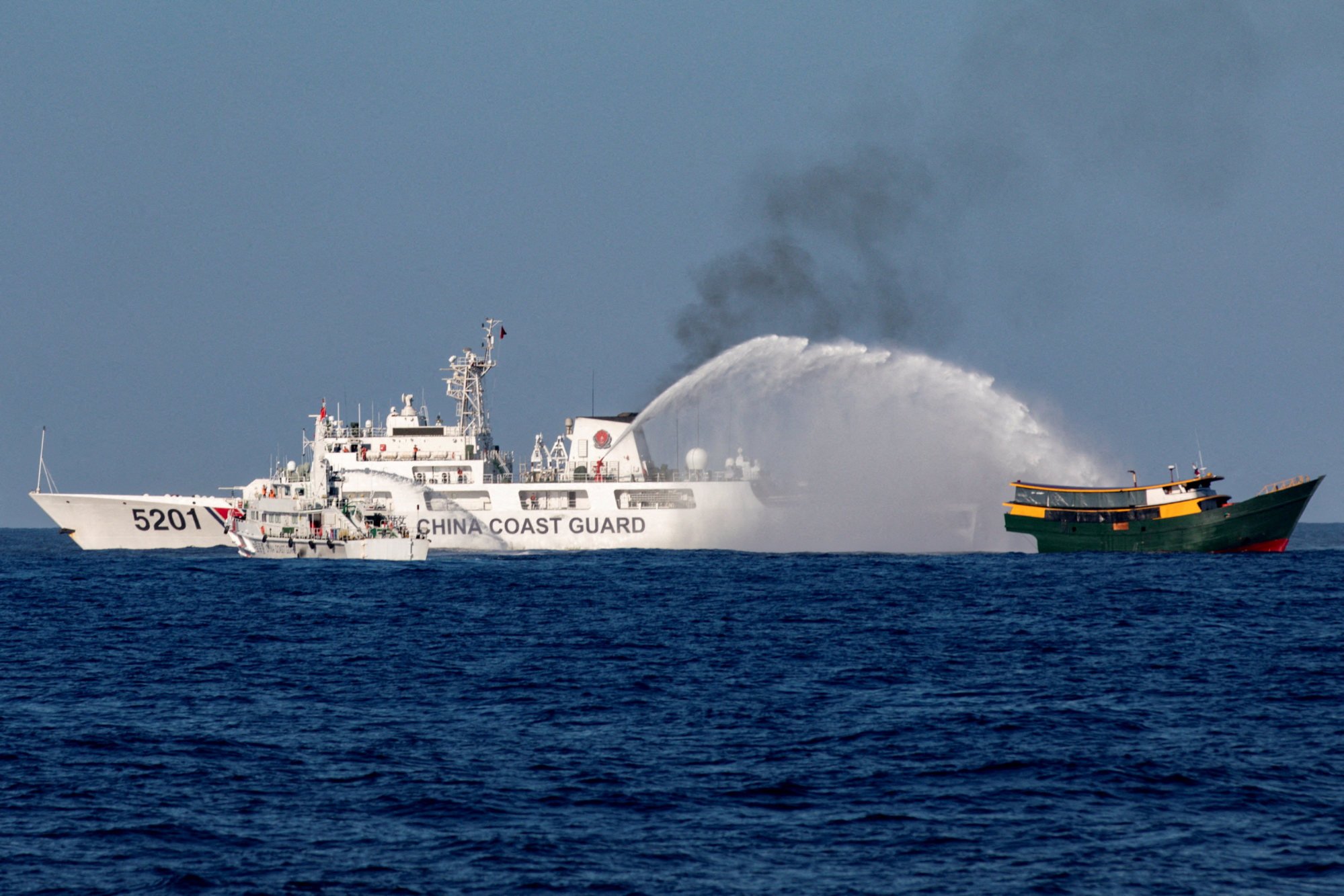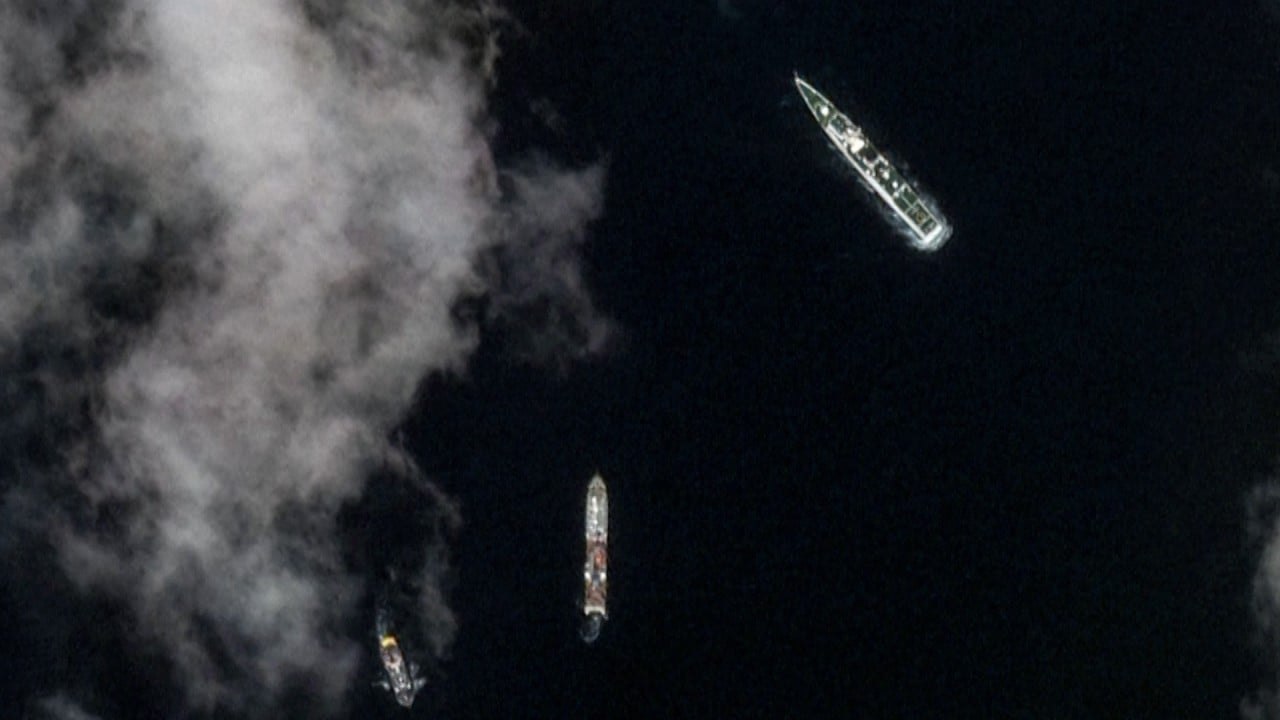“That means that our exercises, our defence concepts, have to go beyond 12 nautical miles in order for us to protect our national interests within our territorial waters and also within the exclusive economic zone (EEZ),” Logico told reporters.
“In the previous exercises, we have been focusing mostly inside military camps. However, we are already very familiar with those areas, it offers no more surprises. So the only way for us to upscale or upgrade our training is to start training in areas that we believe will provide the best benefit for our soldiers,” he added.
Asked by reporters if their drills could cause further tensions with other countries, particularly China, Logico said, “Well, that’s their problem, that’s not our problem.”
Why Marcos’ own sister is calling him out over Philippines’ anti-China moves
Why Marcos’ own sister is calling him out over Philippines’ anti-China moves
Previously, Defence Secretary Gilberto Teodoro Jnr said that the CADC aims to develop the country’s capability to protect its entire territory, including its EEZ, to ensure that the next generation of Filipinos will be able to enjoy its natural resources.
“In plain language, we are developing our capability to protect and secure our entire territory and EEZ in order to ensure that our people and all the generations of Filipinos to come shall freely reap and enjoy the bounties of the natural resources that are rightfully ours within our domain,” Teodoro Jnr said.
The 39th edition of the annual exercise, being carried out under the two countries’ Mutual Defence Treaty (MDT), is designed to enhance force capability and strengthen cooperation in maritime security, amphibious operations, live-fire training, urban operations, aviation operations, counterterrorism, humanitarian assistance and disaster relief.
Signed in 1951, the MDT calls on both countries to aid each other in times of aggression by an external power. In previous pronouncements, the Pentagon said it was prepared to assist Manila if it invoked the treaty amid threats from other nations.
This year’s main event will be a sinking exercise in which participants will have to coordinate their movements to test the interoperability of their weapons systems in downing a mock enemy ship. Philippines and US forces will attempt to sink a vessel, formerly designated as the Navy’s BRP Caliraya (AF-81), off the coast of Laoag in Ilocos Norte.
“The message that we want to send is that we are serious about defending our territory and we have allies. The alliance is still going strong,” Logico said.
Fourteen other countries, including Japan, South Korea, India, Canada and the United Kingdom, will be sending forces to the exercises as observers.
Aside from the Balikatan, Japan, the United States, Australia and the Philippines will conduct anti-submarine drills, warfare training, and communication drills from April 7-8 in waters near Palawan, a province in the western Philippines facing the South China Sea.
Manila and US Air Forces are also slated to hold exercise Cope Thunder from April 8-19, which will showcase fighter jet pilots from both countries training together using a newly renovated runway at Basa Air Base in Pampanga.
Duterte-Xi allegedly made ‘gentleman’s agreement’ for status quo in disputed sea
Duterte-Xi allegedly made ‘gentleman’s agreement’ for status quo in disputed sea
“They will utilise the vessels of their naval and maritime agencies to shadow and harass us and our partners as we undertake freedom of navigation operations and exercises,” Custodio said.
“China will also protest, but that is the most that they can do and they really won’t be able to do anything else against the combined military might of many countries like the USA and its powerful regional allies like Japan and Australia,” he added.

However, Ramon Beleno III, head of the political science and history department at Ateneo De Davao University in southern Davao City, told This Week in Asia that Beijing will not just sit down and do nothing.
“Let’s keep an eye regarding China’s next move. They might build additional islands there or strengthen their forces as retaliatory actions,” Beleno said, noting the Philippines and China are both preparing to defend their territorial claims within the West Philippine Sea (WPS), Manila’s name for the waters of the South China Sea that lie within its EEZ.
“We are not expecting it to go beyond that, like what happened in Ukraine and Russia. We are praying that cooler heads will still prevail,” he added.
The series of exercises come on the heels of China’s growing assertiveness in the waterway.
On March 23, three Philippine navy sailors were injured when Chinese coastguard personnel fired water cannons at their vessels. Manila also accused the Chinese ships of conducting “dangerous” manoeuvres and blocking a civilian chartered resupply ship, the Unaizah May 4, at the Second Thomas Shoal in the South China Sea.
As Marcos Jnr’s approval ratings nosedive, can ‘anger’ over China help him?
As Marcos Jnr’s approval ratings nosedive, can ‘anger’ over China help him?
China, which has competing claims in the South China Sea with the Philippines, Malaysia, Brunei and Vietnam, has not yet made any comments on the drills.
During his visit to Manila last month, Secretary of State Antony Blinken said the US shared the Philippines’ concerns about Chinese “actions that threaten our common vision for a free and open Indo-Pacific,” including those within the Philippines’ EEZ.
“Repeated violations of international law and the rights of the Philippines – water cannons, blocking manoeuvres, close shadowing, other dangerous operations – these waterways are critical to the Philippines, to its security, to its economy, but they’re also critical to the interests of the region, the United States, and the world,” Blinken said.
But rights group Bayan Muna said President Ferdinand Marcos Jnr’s growing dependence on the US for the country’s external defence was further escalating conflict in the South China Sea.
“For the first time in the history of the joint exercises, maritime activities will be conducted outside the country’s territorial waters. It will escalate the already high tensions in the WPS,” said Teddy Casiño, chair of Bayan Muna.
“At the very least, this gives China an additional justification for more military activities in said areas.”


